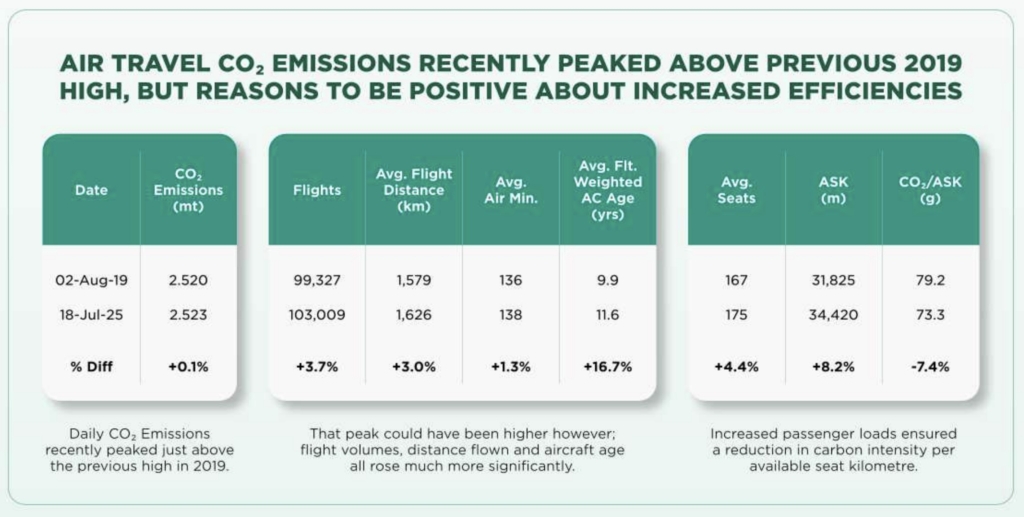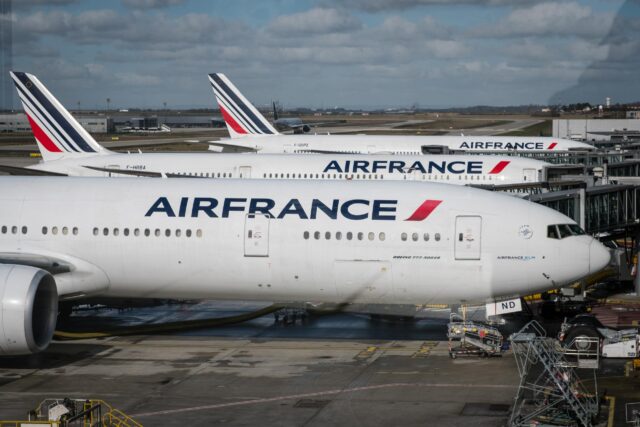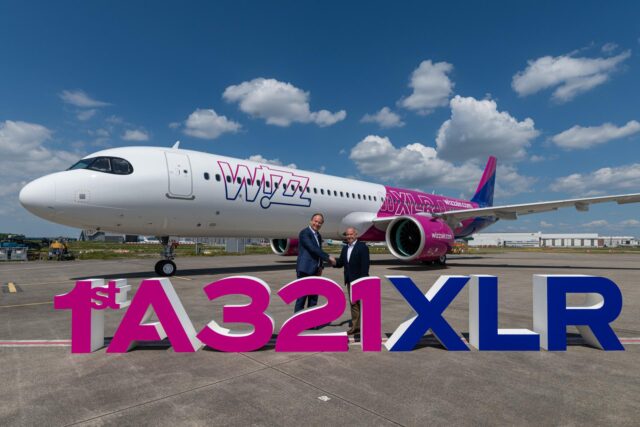Daily aviation emissions hit record high in July 2025 — but data reveals a major leap in airline efficiency

September 16, 2025

On 18 July 2025, global passenger aviation recorded its highest-ever daily carbon emissions, narrowly surpassing the previous peak set in August 2019. According to EmeraldSky analysis of Cirium data, operations that day generated 2.523 million tonnes of CO₂, a fraction above the 2.520 million tonnes emitted on 2 August 2019.
At first glance, the numbers suggest aviation’s full recovery from the pandemic collapse has come at an environmental cost. But the reality is more nuanced.

Airlines carried significantly more passengers and flew further than six years ago, while delivering a striking 7.4% improvement in fuel efficiency per available seat kilometre (ASK).
Efficiency gains despite older fleets
One of the most surprising findings is that airlines achieved these gains despite operating older aircraft. The flight-weighted average fleet age rose by almost 17% between 2019 and 2025, from 9.9 to 11.6 years. This was the opposite of industry playbooks, which usually assume younger fleets drive efficiency improvements.
Persistent supply chain bottlenecks and unexpected engine reliability issues meant airlines could not rely on rapid fleet renewal. Instead, they extracted more from existing assets, demonstrating that operational innovation can deliver measurable gains even when technology adoption stalls.
More flights, further distances, bigger aircraft
The data shows how aviation has changed since 2019:
- Flights: 103,009 (+3.7% vs 2019)
- Average flight distance: 1,626 km (+3%)
- Average flight time: 138 minutes (+1.3%)
- Average aircraft size: 175 seats (+4.4%)
- ASKs delivered: 34.4 billion (+8.2%)
In short, airlines carried more people, on longer routes, using slightly larger aircraft. This wholesale reimagining of capacity deployment meant carriers delivered 8.2% more seat-kilometres while increasing total CO₂ emissions by just 0.1%.
Flying bigger aircraft on longer routes means fewer takeoffs and landings. These are traditionally where the most fuel is burned. As well as this, airlines are investing in innovative ways to save fuel and cut carbon, from using AI to plan flight paths to removing inflight magazines to save weight.

EmeraldSky’s granular tracking system goes deeper than standard industry fuel burn models, which can miss 15–25% of actual emissions by relying on theoretical flight plans. By monitoring 47 variables across more than 100,000 daily flights, the analysis captured small but critical improvements in areas such as:
- Ground operations, including reduced taxi times
- Smarter route planning and coordination with air traffic control
- Network optimisation and fleet deployment strategies
These adjustments, often invisible to passengers, aggregated into a substantial efficiency gain.
The paradox: Growth in aviation doesn’t have to mean growth in emissions
The July milestone highlights a paradox. Aviation is expanding, yet airlines are proving capable of decoupling growth from emissions intensity. The industry is improving efficiency at a rate of around 1.2% per year between 2019 and 2025, above historic trends.
However, absolute emissions are still rising as traffic demand grows. Seasonal patterns suggest that new peaks will become routine during the Northern Hemisphere summer. With the “easy wins” in operational efficiency now largely realised, attention is shifting towards more fundamental solutions.
Sustainable aviation fuel (SAF) currently accounts for less than 1% of global consumption, far below the levels needed to bend the emissions curve. Without scaling SAF or accelerating the entry of new propulsion technologies, further emissions reductions will be hard to achieve.
The July 2025 data tells two stories: first, that aviation has recovered and even expanded beyond pre-pandemic levels; second, that efficiency can be achieved through determined operational focus. But the long-term challenge remains: growth will continue to outpace efficiency gains unless structural changes transform the industry’s fuel mix.
















